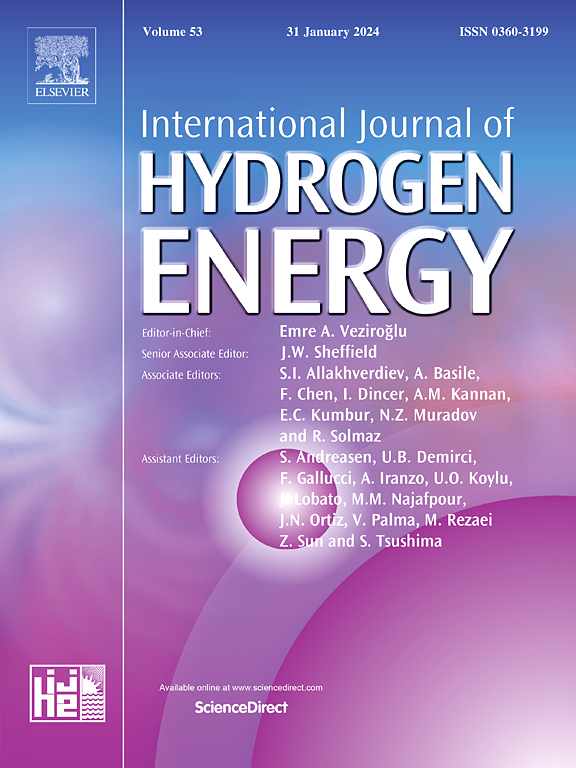Improving syngas yield and quality from biomass/coal co-gasification using cooperative game theory and local interpretable model-agnostic explanations
IF 8.1
2区 工程技术
Q1 CHEMISTRY, PHYSICAL
引用次数: 0
Abstract
The co-gasification of waste biomass and low-quality coal to produce syngas as fuel is an effective and sustainable approach in the waste-to-energy paradigm. The modeling of this process is however complex and time-consuming. The data-driven machine learning (ML) approaches enhanced with explainable artificial intelligence (XAI) are capable of solving this issue. Hence, in this study, five different ML techniques including Linear Regression (LR), Support Vector Regression (SVR), Gaussian Process Regression (GPR), Extreme Gradient Boosting (XGBoost), and Categorical Boosting (CatBoost) were employed for the model-prediction. The ultimate analysis, proximate analysis, and operation setting data were employed for the control factors syngas yield and lower heating value (LHV) prediction. The prediction results showed that XGBoost was superior to other ML approaches with an R2 value of 0.9786, mean squared error (MSE) of 10.82, and mean absolute percentage error (MAPE) of 9.8% during model testing of the syngas yield model. In the case of the syngas LHV model an R2 value of 0.9992, MSE of 0.03, and MAPE of 0.83% was observed. XGBoost was superior for both syngas yield and LHV models. The analysis of feature importance and its quantification was conducted by Shapley Additive Explanations (SHAP) and Local Interpretable Model-agnostic Explanations (LIME). SHAP and LIME approaches revealed that reaction temperature and biomass mixing ratio were the most important control factors for the syngas yield model.
利用合作博弈论和局部可解释模型不可知的解释提高生物质/煤共气化合成气产量和质量
废生物质与低质量煤共气化生产合成气作为燃料是废物转化能源模式中一种有效和可持续的方法。然而,这个过程的建模是复杂和耗时的。通过可解释的人工智能(XAI)增强的数据驱动机器学习(ML)方法能够解决这个问题。因此,本研究采用线性回归(LR)、支持向量回归(SVR)、高斯过程回归(GPR)、极端梯度增强(XGBoost)和分类增强(CatBoost)五种不同的机器学习技术进行模型预测。利用最终分析、近似分析和运行设定数据对控制因素合成气产率和低热值(LHV)进行了预测。结果表明,在合成气产率模型的模型检验中,XGBoost预测的R2值为0.9786,均方误差(MSE)为10.82,平均绝对百分比误差(MAPE)为9.8%,优于其他ML方法。合成气LHV模型的R2值为0.9992,MSE为0.03,MAPE为0.83%。XGBoost在合成气产率和LHV模型上都具有优势。采用Shapley加性解释(SHAP)和局部可解释模型不可知论解释(LIME)对特征重要性进行分析和量化。SHAP和LIME方法表明,反应温度和生物质混合比例是合成气产率模型最重要的控制因素。
本文章由计算机程序翻译,如有差异,请以英文原文为准。
求助全文
约1分钟内获得全文
求助全文
来源期刊

International Journal of Hydrogen Energy
工程技术-环境科学
CiteScore
13.50
自引率
25.00%
发文量
3502
审稿时长
60 days
期刊介绍:
The objective of the International Journal of Hydrogen Energy is to facilitate the exchange of new ideas, technological advancements, and research findings in the field of Hydrogen Energy among scientists and engineers worldwide. This journal showcases original research, both analytical and experimental, covering various aspects of Hydrogen Energy. These include production, storage, transmission, utilization, enabling technologies, environmental impact, economic considerations, and global perspectives on hydrogen and its carriers such as NH3, CH4, alcohols, etc.
The utilization aspect encompasses various methods such as thermochemical (combustion), photochemical, electrochemical (fuel cells), and nuclear conversion of hydrogen, hydrogen isotopes, and hydrogen carriers into thermal, mechanical, and electrical energies. The applications of these energies can be found in transportation (including aerospace), industrial, commercial, and residential sectors.
 求助内容:
求助内容: 应助结果提醒方式:
应助结果提醒方式:


